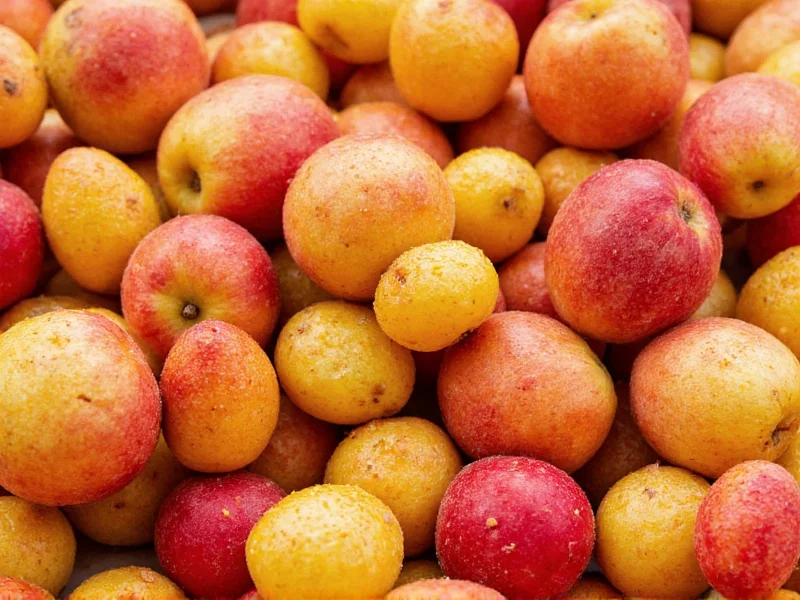The Art of Flavor Enhancement with Fruit
Seasoning fruit transforms ordinary fresh produce into extraordinary culinary experiences. Unlike traditional cooking where seasonings mask imperfections, fruit seasoning works with the natural sugars and acids already present in fruits. The goal isn't to overpower but to highlight and balance existing flavors through strategic pairing of complementary elements.
Understanding Flavor Chemistry in Fruit Seasoning
Fruit contains natural sugars, acids, and volatile compounds that create its distinctive taste profile. Effective seasoning works with these components:
| Fruit Category | Natural Flavor Profile | Ideal Seasoning Partners |
|---|---|---|
| Citrus (oranges, grapefruit) | Bright, acidic, slightly bitter | Thyme, rosemary, black pepper, sea salt |
| Berries (strawberries, raspberries) | Sweet-tart, delicate | Balsamic vinegar, black pepper, mint |
| Tropical (mango, pineapple) | Intensely sweet, complex | Chili-lime, cilantro, ginger |
| Stone Fruits (peaches, plums) | Rich sweetness, floral notes | Cinnamon, cardamom, vanilla |
| Melons (watermelon, cantaloupe) | Subtle sweetness, high water content | Feta cheese, mint, lime zest |
Creating Balanced Homemade Fruit Seasoning Blends
Commercial fruit seasonings often contain unnecessary sugars and preservatives. Crafting your own allows complete control over ingredients while maximizing flavor potential. The key to successful homemade fruit seasoning lies in the proper ratio of components:
- Acid component (1 part): Citrus juice or vinegar brightens flavors and prevents browning
- Seasoning component (2 parts): Spices, herbs, or zest add complexity
- Sweet component (0-1 part): Only when necessary, use honey, maple syrup, or a small amount of sugar
- Texture element (optional): Nuts, seeds, or coconut add mouthfeel
For natural fruit flavor enhancers without added sugar, focus on the acid and seasoning components. A simple blend of lemon zest, finely grated ginger, and a pinch of sea salt works wonders on most fruits without altering their nutritional profile.
Practical Applications for Every Meal
Understanding how to season fruit for dessert applications differs from breakfast or savory preparations. Consider these usage guidelines:
Breakfast Applications
For yogurt parfaits or oatmeal toppings, use lighter seasonings that won't overwhelm morning dishes. A sprinkle of cinnamon on sliced apples or a dash of cardamom on pears creates subtle complexity. When preparing fruit seasoning for grilled fruit, use dry spice rubs before cooking and finish with a light citrus drizzle after.
Dessert Enhancements
Dessert applications allow for more robust seasoning. Try these professional techniques:
- Berry transformation: Toss strawberries with balsamic vinegar and cracked black pepper (ratio: 2 cups berries, 1 tbsp vinegar, ¼ tsp pepper)
- Tropical upgrade: Combine mango with lime zest, a pinch of cayenne, and fresh cilantro
- Stone fruit perfection: Brush peaches with melted coconut oil mixed with cardamom before grilling
Avoiding Common Fruit Seasoning Mistakes
Even experienced cooks make errors when seasoning fruit for dessert or other applications. Watch for these pitfalls:
- Over-sweetening: Most fruits contain sufficient natural sugars—added sweeteners should enhance, not dominate
- Incorrect timing: Delicate herbs should be added just before serving, while spices can be incorporated earlier
- Ignoring texture: Consider how seasonings will interact with the fruit's structure—powdered spices work better on firm fruits, while liquid seasonings penetrate softer varieties
- Mismatched intensities: Strong spices like cloves overwhelm delicate fruits like melons but complement robust flavors like figs
Health-Conscious Fruit Seasoning Approaches
For those seeking sugar-free fruit seasoning options, focus on flavor enhancers that don't add calories:
- Lemon or lime zest (contains aromatic oils without the sugar of juice)
- Vanilla bean scrapings (adds sweetness perception without sugar)
- Pinch of high-quality sea salt (enhances natural sweetness)
- Fresh herb infusions (mint, basil, or rosemary steeped in minimal water)
These healthy fruit topping alternatives maintain the nutritional integrity of fresh fruit while creating restaurant-quality presentations. When preparing fruit for children, start with milder seasonings like cinnamon or vanilla before introducing more complex flavor profiles.
Seasoning Techniques for Specific Fruit Categories
Berries and Delicate Fruits
Berries require gentle handling. The best spices for fresh fruit in this category include black pepper, which contains rotundone—a compound that enhances fruit flavors without overpowering them. For a professional touch, combine 1 teaspoon balsamic vinegar with ½ teaspoon honey and a pinch of freshly cracked pepper for every 2 cups of berries.
Citrus and Stone Fruits
Citrus fruits benefit from herbaceous notes. Try thyme or rosemary with grapefruit segments, or use a cardamom-infused simple syrup (made with equal parts water and honey, simmered with crushed cardamom pods) for peaches and plums. These citrus fruit seasoning ideas create sophisticated flavor profiles while maintaining the fruit's integrity.
Tropical Fruit Combinations
Tropical fruits stand up to bolder seasonings. Create a chili-lime salt by combining 2 tablespoons lime zest, 1 teaspoon fine sea salt, and ¼ teaspoon cayenne pepper. This blend works exceptionally well with mango, pineapple, and watermelon, creating those sought-after tropical fruit seasoning combinations popular in Latin American and Southeast Asian cuisines.











 浙公网安备
33010002000092号
浙公网安备
33010002000092号 浙B2-20120091-4
浙B2-20120091-4